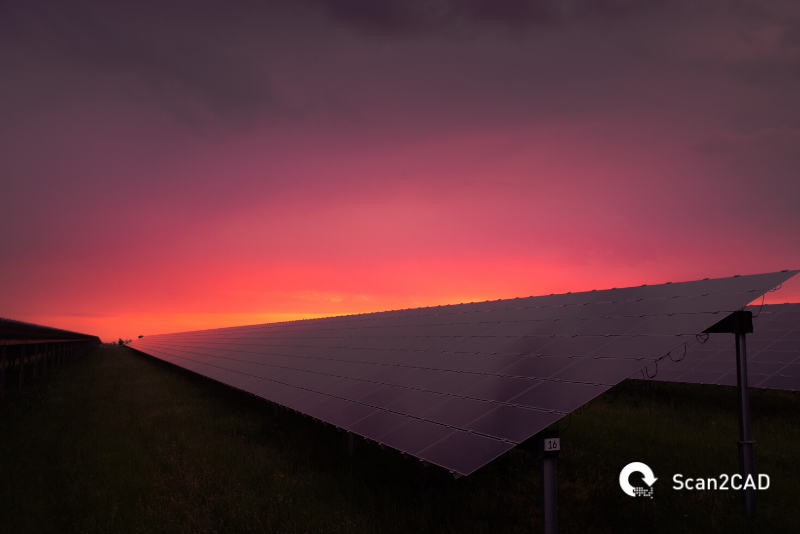A new month is upon us once again, and with this comes another edition of Scan2CAD’s Coffee Break News. This month’s round-up of important news and information will surely pique your interest and give you an insight into what is going on in the fields of CAD, engineering, design, architecture, and technology.
Stories we followed this month include the call of Autodesk’s CEO to use technology in designing products that are beneficial to society and generate better job opportunities; how architecture and landscape firm [delacourt] [van beek] used Marionette to design Van Goghplein, a plaza displaying a portrait of Vincent Van Gogh with an artful layout of interlocking bricks; and how a research group at Manchester University discovered a pioneering application of X-ray imaging technology for woven textile composites.
Other stories you will read about in this edition include the use of CT scans and 3D printing to ‘give voice’ to a mummified priest; robots and smart manufacturing taking centerstage at an event in Anaheim this month; and the announcement of the closure of the School of Architecture at Taliesin.
Enjoy this edition of Coffee Break News, and have a great month ahead!
Autodesk CEO calls for more efficient use of technology for better jobs, products
Autodesk CEO Andrew Anagnost, in a recent speech at Autodesk University in Las Vegas, acknowledged that technology can be both a positive and negative force, and companies must use it to manufacture better products, focus on sustainability, and generate better jobs with higher security for the growing population of the world.
“Because, although technology can be a positive force, there are forces pulling us in other directions. On the one hand, we know that a growing population is inevitable – as is a world with more automation – because so much more is needed. But at the same time, we fear there will be less jobs and less of our planet’s scarce resources,” Anagnost said.
He added that the growing middle class of the world is driving demand, and companies must recognize this and realize their responsibility. “Whatever your definition, the fact that 4 billion people enjoy mobility and prosperity is enormously good news. But with this increasing prosperity comes increasing demand: For more housing; hotels; more automobiles; and more airplanes. We know that more is inevitable. As we make more things for more people, we also know that we create more potential for negative impact. Making all we need with less harm to the planet and people is a reality that we all need to face up to.”
Anagnost also realizes that the challenge is great, but the opportunities are also there for the taking. “First, we have the opportunity to better use the world’s energy and materials. Using less is part of it, but it’s also about better: more renewable energy and more circular materials. Better is also about the health and resilience of the entire population, that means designing products without harmful materials that compromise our safety, or using supply chains that compromise people, it means designing buildings that prioritize health and well-being, and designing cities that are resilient in the face of climate change.”
Marionette in Vectorworks Used For Artistic Design
Architecture and landscape firm [delacourt] [van beek] utilized Marionette in Vectorworks to design Van Goghplein, a town plaza in the Netherlands with a prominent display featuring a portrait of Vincent Van Gogh using a layout of interlocking bricks.
In this video by Vectorworks profiling the firm, [delacourt] [van beek] founder Ton Vanbeek explains how they used Vectorworks for the ambitious project.
Composites Research Leads to Adoption in Aerospace Weaving
A research group at Manchester University postulated that X-ray imaging technology could be used for high-specification composite materials particularly in woven textiles. This is based on work that was published in the Journal of Composites Science and Technology where researchers showed a detailed picture of the evolution of damage in braided textile composites.
Textile composites are utilized for creating lightweight damage-tolerant structures, but the lack of adequate design and material performance data has hindered their adoption in the high-value manufacturing industry. However, the research group showed real-time data and 3D imaging processes detailing how carbon fiber composite tubes handle structural loading.
This offers great potential in designing and utilizing braided textile composites for aerospace and automotive drive shafts, sporting and hobby equipment, and other uses. Professor Phil Withers, chief scientist at the Henry Royce Institute, said, “In-situ X-ray imaging has allowed us to shed light on the 3D nature of the initiation and propagation of damage mechanisms in composite tubes for the first time.”
Other stories we followed this month:
-
CT scans and 3D printing are being used to recreate the voice of Nesyamun, a 3000-year-old mummified priest.
-
The ATX and D&M shows are taking place in Anaheim, California this February, and robotics and smart manufacturing are on display in the events.
-
The famed School of Architecture at Taliesin is shutting its doors after 88 years of existence, after talks with the Frank Lloyd Wright Foundation to keep the school open bogged down.

